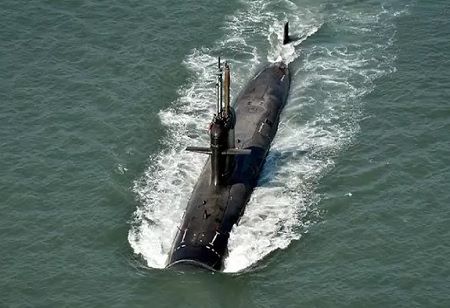
Rajnath Singh to Commission India's 2nd Nuclear Missile Submarine

 Defence Minister Rajnath Singh is poised to commission India’s second nuclear-powered ballistic missile submarine (SSBN), INS Arighat (S-3), at a discreet event in Visakhapatnam. The ceremony will be attended by senior naval officials, including Chief of Naval Staff Admiral Dinesh Tripathi, Indian Strategic Command head Vice Admiral Suraj Berry, and top officials from DRDO. The SSBN will operate under India's strategic command.
Defence Minister Rajnath Singh is poised to commission India’s second nuclear-powered ballistic missile submarine (SSBN), INS Arighat (S-3), at a discreet event in Visakhapatnam. The ceremony will be attended by senior naval officials, including Chief of Naval Staff Admiral Dinesh Tripathi, Indian Strategic Command head Vice Admiral Suraj Berry, and top officials from DRDO. The SSBN will operate under India's strategic command.
While the defence ministry was tight-lipped about the classified project, HT has learnt that the 6,000-tonne INS Arighat is set to embark on a long-range patrol of the Indo-Pacific armed with 750-km range nuclear ballistic missiles K-15. India’s third SSBN, INS Aridaman or S4, is also set to be commissioned next year, followed shortly after by a fourth SSBN codenamed S-4, the people said on condition of anonymity.
India will now have two SSBNs—INS Arihant (S-2) and INS Arighat—patrolling the high seas, enhancing the country's nuclear triad and second-strike capability. The Indian Navy has requested approval from the Narendra Modi government for two additional nuclear-powered, conventionally armed submarines (SSNs). Unlike SSNs, which can remain submerged for extended periods with their only limitations being logistics, supplies, and crew changes, diesel-electric attack submarines (SSKs) must surface almost daily to recharge their batteries.
Given India’s location at the centre of the Indo-Pacific, the two SSBNs can offer huge strategic leverage and act as a deterrent to any navy trying to flex its muscles in the region. Both the INS Arihant-class submarines are powered with an indigenous nuclear reactor and indigenous nuclear missile. Since INS Arihant was a technology demonstrator, INS Arighat has plugged all technological gaps and, in that context, is a more advanced version.
Upon the commissioning of the S-4 SSBN, India will introduce a new class of submarines that are significantly larger. These advanced submarines will be capable of carrying nuclear ballistic missiles with a range of 3,000 km and will feature additional missile tubes. As India already possesses land-based nuclear missiles like the Agni series and air-launched nuclear capabilities, the SSBN will become the most formidable element of the country's nuclear triad.
In the coming months, the Indian Navy will enhance its capabilities with the commissioning of the latest guided missile stealth destroyer INS Surat, the stealth guided missile frigate INS Taragiri, and the sixth Kalveri class attack submarine, INS Vagsheer. Additionally, orders for three more Kalveri class submarines are anticipated to be placed with Mumbai’s Mazgaon Dock Shipbuilders Ltd later this year.